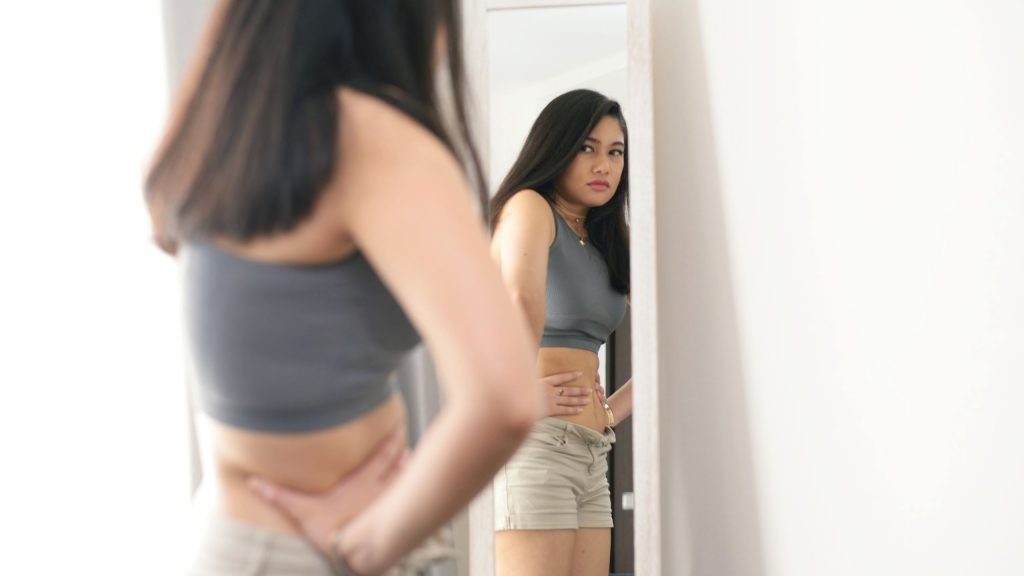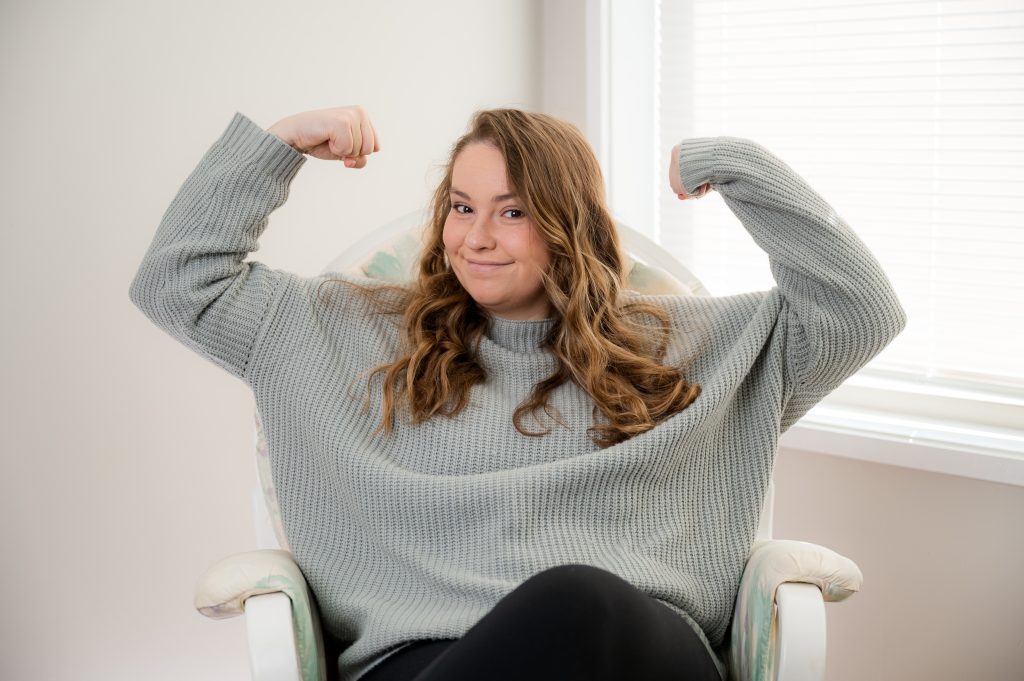What is your negative body image actually telling you?
Hi, my name is Lilly Malardie, and I’m the director of coaching and training development at Body Brain Alliance. With many years in the behavior change coaching space, I want to talk about body image and what it can tell us about our thoughts, feelings, and behaviors.
Prefer to watch instead of read?
Understanding Negative Body Image vs. Body Dysmorphia
Differentiating the Two
It’s important to know the difference between a negative body image and something deeper, like body dysmorphia. Body dysmorphia is a mental health condition that revolves around an obsession with perceived flaws in one’s appearance. It includes intrusive thoughts, rumination, and deep guilt and shame around the body. If this sounds like you, I highly recommend working with a mental health professional specializing in this area.
Negative body image can affect anyone, but it’s more common in women and often begins as early as middle school. If you experienced negative body image thoughts early in life, these thoughts can persist subconsciously into adulthood, masking your true emotions.
Identifying the Real Emotions Behind Negative Body Image
Recognizing Misaligned Feelings
Have you ever woken up, gotten ready for work, and suddenly thought, “I feel fat”? This thought can become a way to explain your feelings, even though “feeling fat” is not an emotion. It’s crucial to identify the actual emotions you’re experiencing instead of blaming your body.
Increasing Awareness
By increasing awareness that this is occurring, you can use it as a cue to utilize healthy coping mechanisms and give yourself the opportunity to use real-life skills. Saying “I feel fat” doesn’t provide any healthy next steps or solutions. It leaves you stuck in a thought loop with no resolution.

Practical Steps to Address Negative Body Image
Pausing and Reflecting
The next time you have a negative thought about your body, use it as an opportunity to stop, pause, and reflect. When the thought “I feel fat” comes up, ask yourself, “What am I actually experiencing here? What is contributing to this negative body image in this moment?”
Leading with Curiosity
Open the door to curiosity in your own mind to understand what’s really happening so you can find a better solution that is more helpful and healthy for you. Ask yourself questions like:
-
- How am I actually feeling?
-
- What is the true emotion I’m experiencing?
Identifying Physical Discomfort
Maybe you feel physically uncomfortable due to tight clothing, feeling hot and sweaty, recent meals causing bloating, or being on your menstrual cycle. Recognizing these factors can help address the physical discomfort contributing to negative body image.
Recognizing Stress and Emotional Factors
Consider if stress, lack of sleep, upcoming presentations, hard conversations, or feeling overstimulated and burnout are influencing your thoughts. Identifying these stressors can help you address the underlying issues.
Meeting Your Needs
Practical Solutions
By giving yourself a moment to reflect and identify your true feelings, you can meet your needs more effectively. This can look like:
-
- Setting boundaries with others
-
- Scheduling alone time
-
- Getting outdoors and moving your body
-
- Taking a nap
-
- Wearing more comfortable clothing
If these resonate with you and you feel you have been neglecting these areas, coaching can be very helpful. Consider applying for one-on-one coaching with us.
Practicing Emotional Regulation
Gaining Control
Practicing emotional regulation helps gain control over how you’re feeling. Understanding what contributes to positive or negative body image can help you find better solutions and create more neutrality around your body image.
Thought Rebuttals and Challenges
The more you practice thought rebuttals and challenges, the better you can see the truth in identifying what’s happening. This advances your emotional regulation skills and helps create a healthier mindset.




